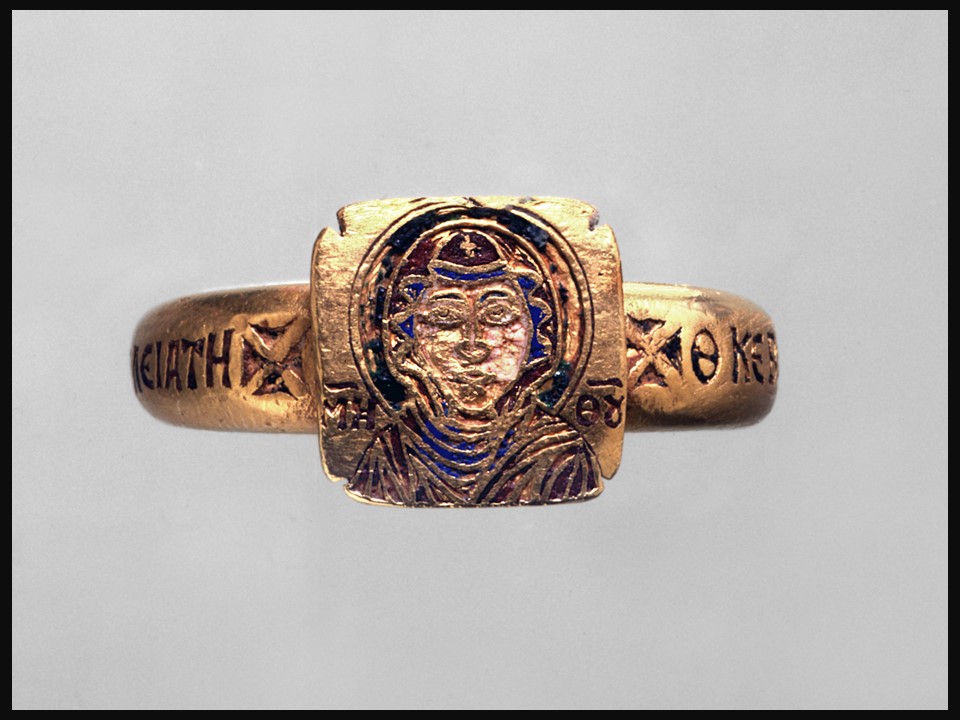
Michael Attaleiates’s Ring at Dumbarton Oaks has an inscription on its hoop that reads… Bearer of God, help thy servant Michael Attaleiates… while the bezel of the ring displays the bust of the Virgin flanked by the abbreviation ‘Mother of God.’ Byzantine rings with the owner’s name are scarce, and a ring associated with such a distinguished citizen is exceptionally rare. It stands as an extraordinary treasure! http://museum.doaks.org/objects-1/info?query=Portfolios%20%3D%20%222620%22&sort=0&page=10
In confronting this historical artifact, the initial question that arises relates to its owner, Michael Attaleiates. The key questions are: Who was he, and what attributes contributed to his recognition as a significant figure?
Michael Attaleiates was a Byzantine historian and government official who lived in the 11th century. He was likely born in Attaleia and relocated to Constantinople between 1030 and 1040 for legal studies. Upon his ‘graduation’ he entered the empire’s administration serving in the judiciary sector. Recognized for his judicial prowess, he received prestigious honors from the Byzantine Emperors and amassed substantial wealth through services in the empire’s administration.
In 1072, he compiled the Ponema Nomikon, a legal synopsis for Emperor Michael VII, based on the 9th-century Basilika. Around 1079/80, he penned The History, chronicling the Byzantine Empire from 1034 to 1079, showcasing valuable insights into the events and characters of his time, as well as the political, military, and social developments. His writings contribute significantly to our understanding of the political and cultural context of the Byzantine Empire during a critical period of its history. https://alexandria-publ.gr/shop/vios-ke-politia-enos-vizantinou-mandarinou/
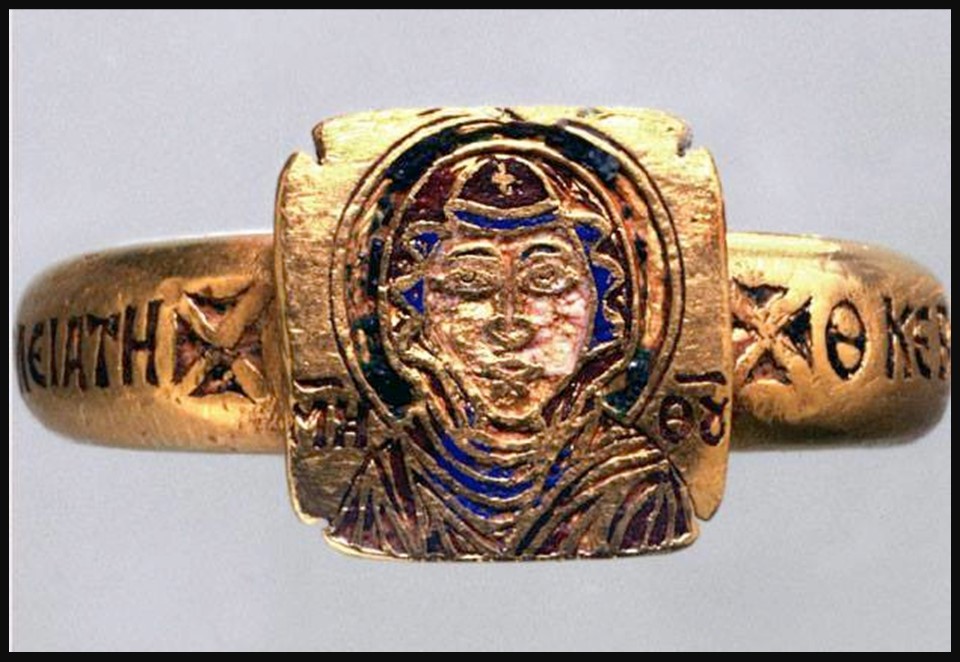
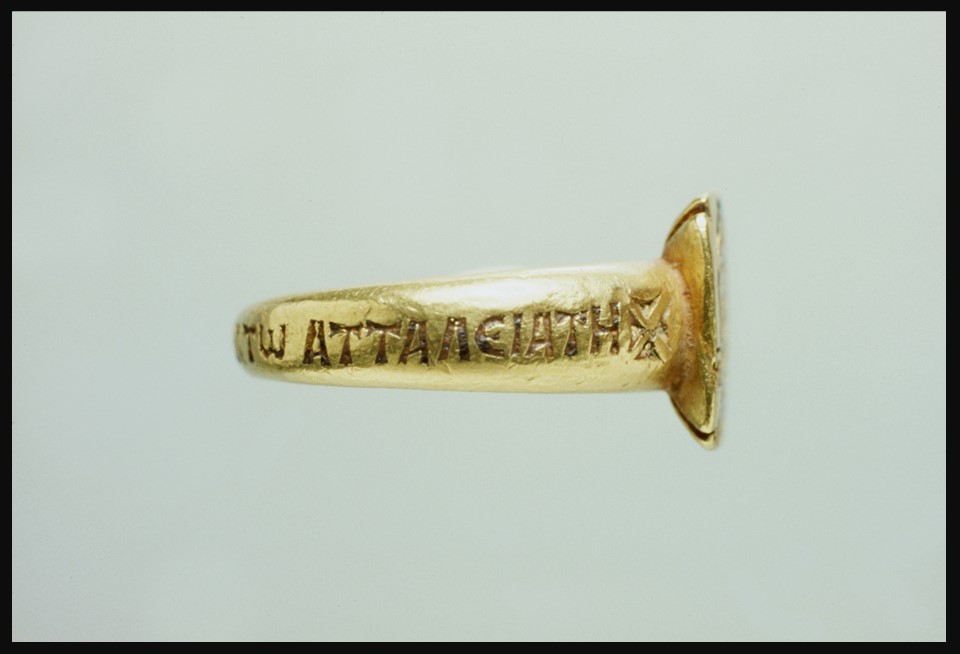
Back to Attaleiates’s ring, and according to Stephen Zwirn, retired Assistant Curator in the Byzantine Collection of Dumbarton Oaks as of 2012… the ring stands out for deviating from the typical cloisonné technique used in Byzantium, instead adopting the champlevé technique associated with medieval Western European production. This method involves carving a cavity into the background, filling it with enamel, and leaving raised lines to define the image, allowing for intricate details in the drapery folds and inscriptions. The ring is so well crafted, that there is no doubt that this technique had been fully mastered by a Byzantine artist. http://museum.doaks.org/objects-1/info?query=Portfolios%20%3D%20%222620%22&sort=0&page=10
The second inquiry that arises concerns the acquisition history of the ring. According to Dumbarton Oaks records, on the 15th of August – a day Christians commemorate the feast of the Assumption of the Blessed Virgin Mary – the Dumbarton Oaks Research Library and Collection in Washington, DC, acquired Michael Attaleiates’s Ring from the Art Dealer Joseph Brummer. This prompts a dual question: Who was Joseph Brummer, and what distinguishes him as a noteworthy figure in the realm of art dealers?
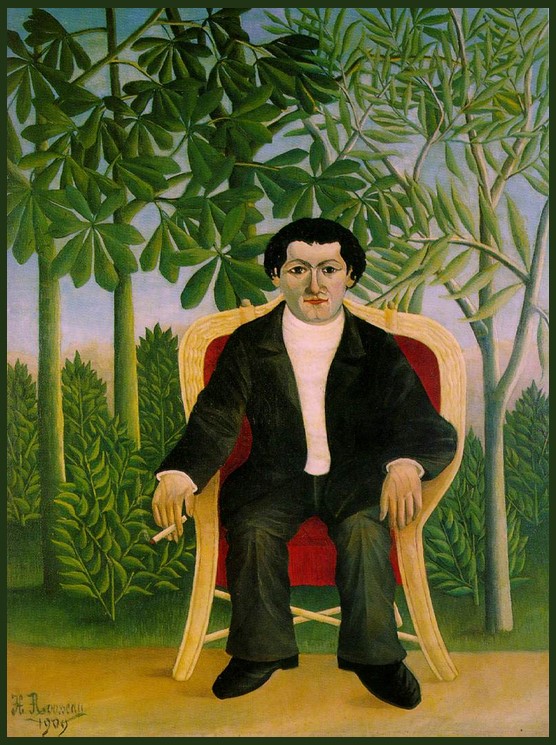
Portrait of Joseph Brummer, 1909, Oil on Canvas, 115.9 × 88.3 cm, The National Gallery, London, UK https://www.nationalgallery.org.uk/paintings/henri-rousseau-portrait-of-joseph-brummer
Joseph Brummer was a prominent art dealer in the early to mid-20th century, known for his significant contributions to the art world. Born in 1883 in Hungary, Brummer, along with his brothers, Ernest and Imre, established the Brummer Gallery in Paris in 1905, later moving it to New York in 1914. The Brummer Gallery played a pivotal role in recognizing the artistic importance of Medieval Arts and unusually introducing them as if they were modernist artifacts. The Brummer Gallery was also famous for introducing European modern art to the United States, showcasing works by renowned artists such as Picasso, Modigliani, and Brancusi. Joseph Brummer was renowned for his discerning eye and deep knowledge of art, building a reputation as a tastemaker and a key figure in the art market during his time. His legacy lives on not only through the artworks he handled but also in the influence he had on shaping the appreciation of art in America. https://medievalartus.ace.fordham.edu/exhibits/show/josephbrummer/josephbrummer-essay
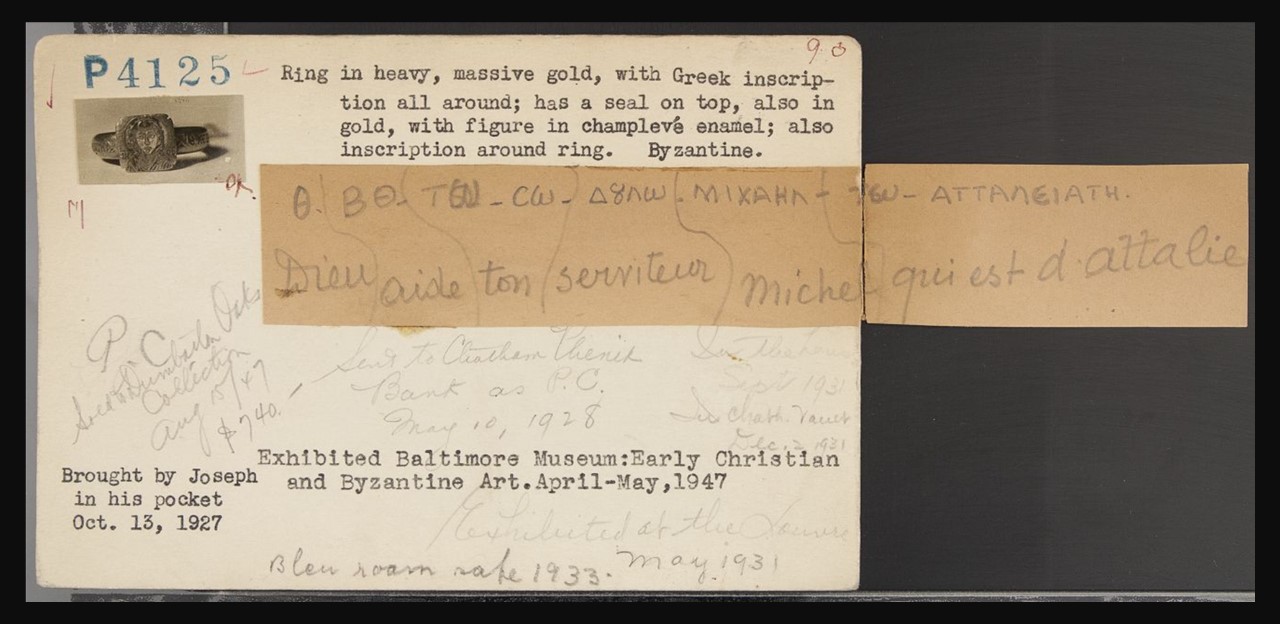
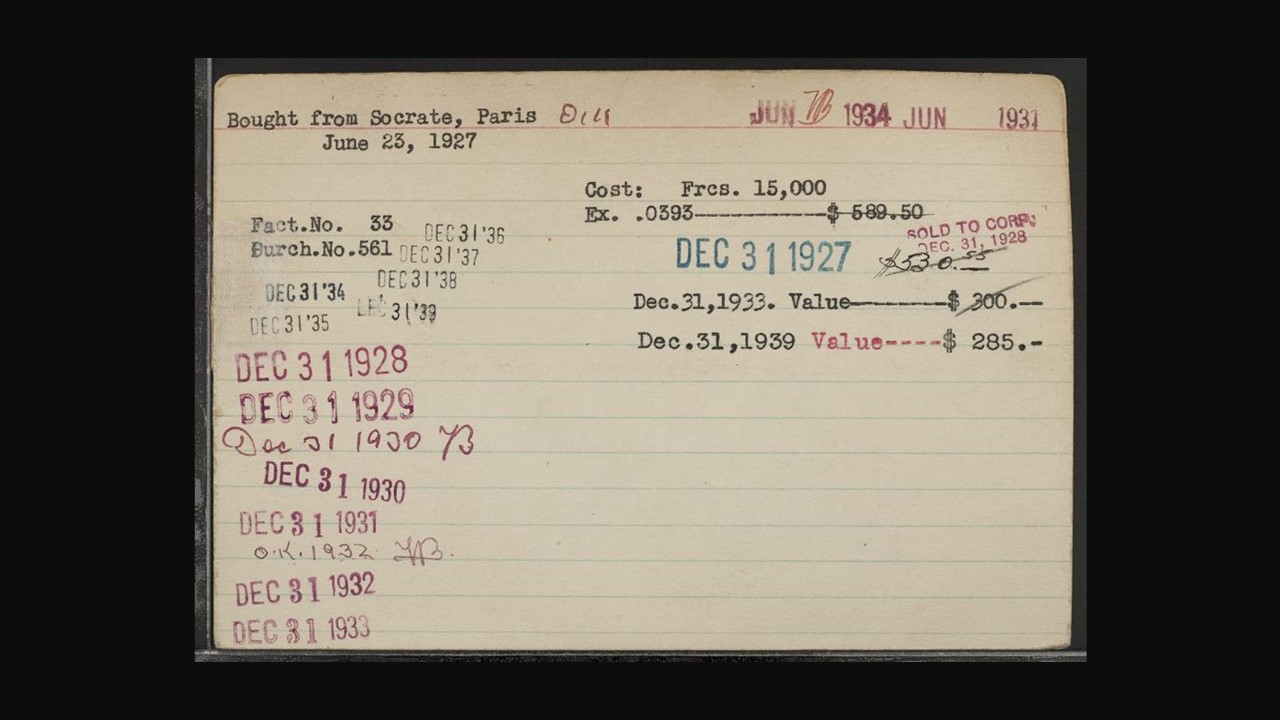
On the 15th of August 1947, Dumbarton Oaks Research Library and Collection purchased Attaleiates’s Gold Ring from Joseph Brummer. Searching MET’s Thomas J. Watson Library Digital Collections – The Brummer Gallery Records, I present you with both sides of the Ring’s Inventory Card, Numbered P4125!
For a Student Activity, titled Comparative Analysis of Champlevé and Cloisonné Enamel Techniques in Byzantine Art, please… Check HERE!